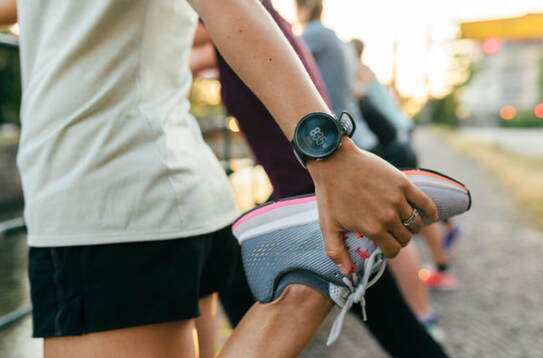 Stretching has been a hot topic in the health and fitness world for a few years now and one that everybody seems to have their own opinions on! When should I stretch? How long should I stretch for? What types of stretching should I be doing? We will discuss all these questions and more! What is stretching? Stretching is the act of getting you out of the posture that you spend most of your time in and moving joints through their full range. It involves placing parts of your body into a position that with lengthen the muscles and surrounding fascia/ connective tissue. It can be done before or after exercise but also throughout the day when in sustained postures, to prevent muscle tightness, aches and pains and improve circulation. What types of stretching should you be doing? As a general rule of thumb there are two main types of stretching; ● Static stretching – this type of stretch is performed without movement meaning you would get into the stretch position and hold that position for a given amount of time. ● Dynamic stretching – this type of stretch is performed with movement meaning you use a swinging or bouncing movement to extend your range of motion and flexibility. Depending on what you are trying to achieve from your stretching (eg. Warming up before exercise or increasing muscle length) will determine which type of stretching to complete and when. When should you stretch? It has long been believed that we should stretch for long periods of time before and after an activity, but this isn’t necessarily true! It is crucial to warm-up your body prior to exercise through dynamic movements. The aim of these movements before exercise is not to improve your flexibility but to simply prime the muscles, joints, ligaments and tendons that you are about to use. In regard to trying to improve your flexibility and muscle length the most effective time to conduct this type of static stretching is after exercise as the muscles are warm and pliable. Another great time to stretch can be straight before bed as this is when our muscles and soft tissues heal, meaning they are healing in an elongated or stretched position that was achieved before going to sleep. How long should your stretch for? When completing static stretching a single stretch should be held for at least 30-60 seconds and repeated two or three times on each side. This gives the muscle enough time to relax and begin to lengthen. When performing dynamic stretches prior to exercise the duration ca depend on a number of things including how tight you may be already, the temperature and how long your exercise session is going to be. At a minimum, dynamic stretches should be performed for 5-10 minutes before any exercise, but longer than this for higher intensity, longer duration activities. If you would like more assistance or guidance around stretching, get in touch with us! By Aleisha Michael Accredited Exercise Physiologist.
0 Comments
 “I want to get rid of my muffin top” or “lose my wobbly arms” and “cut back the beer belly” are all phrases we hear regularly in the clinic and I’m sure we’ve all thought at some point. Unfortunately, I’m here to bust that myth and let you know that no matter how hard you try, you can’t target where on your body fat loss occurs. Often these goals or obsessions with a particular aspect of your body can actually be preventing you from being more effective with your training and achieving a range of health and fitness goals, rather than just one. It has been a long-time belief for many people that by training a specific muscle or muscle group, fat loss will also occur in this same area. This is not the case and yet many popular workouts on social media and in magazines will have you believe otherwise, promising to “tone those trouble areas.” Often what these people are selling is a quick fix and not providing you with a holistic approach to your overall health and fitness goals. To reduce fat mass, we must have a greater energy expenditure than input into our bodies. We gain energy through consuming food and we burn energy in 3 ways. Firstly, while at rest to maintain our bodies essential functions like breathing, blood circulation and organ function. Secondly the process of turning food into energy and lastly by moving our bodies. Put simply when our body needs energy, it uses a range of resources within the body, one being fat which is then released from fat calls to help produce said energy. Unfortunately, regardless of which body parts we are moving our body removes fat from cells based on your gender, genetics, body shape and a range of other factors. Often the exercises prescribed in these “spot targeting” workouts are focused around working very small muscles that don’t contribute a lot to improving your overall fitness, strength or energy expenditure. If your goal is to “get lean” meaning to build muscle and decrease fat mass, then targeting small muscles will likely leave you feeling frustrated and unsuccessful. Alternatively focusing on large muscle groups when training will not only improve your overall fitness and strength but also the amount of energy you burn, increasing your energy expenditure for the day, promoting an increase in fat loss overall. To increase your overall fat loss try focusing on activities that expend more energy and eventually your “target areas” will reduce too. If you find that you really enjoy training the smaller muscles, leave those exercises for the end of your workouts if you have the time and energy! Aleisha Michael 1. Be prepared
Make sure you have the right gear, which is really just a good supportive pair of footwear and if you're female a good fitting bra. That’s the beauty of running. You don’t actually need fancy workout clothes, a top of the range GPS tracking watch, or a running coach, you just need decent footwear and a desire to get started. 2. Stop procrastinating and just get started You might feel overwhelmed by how to start running – do you need the fancy watch, a program for what you should be doing or anything else, but just getting started and forming a habit of undertaking regular exercise is the first step. On your first run, try and set a time that you are going to be out exercising for - that might be as little as 20 minutes including your warm up and cool down. And don’t expect that you are going to be able to jog for the whole time you are out on your first run. 3. Use the walk run method As it says, this is a training method where you undertake walking and jogging intervals throughout your training session. Following your warm up you might start with jogging for 1 minute, followed by walking for 4 minutes, repeating that cycle for 4 times. As your fitness improves you can slowly increase the amount of time that you jog, and decrease your walking time – so after 4 weeks it might be a cycle of 4 mins jogging, and 1 minute walking. It’s always good to finish with a walking segment to cool down, and then end with stretches. If you have a higher level of base fitness, you might start straight at 3 mins jogging and 2 minute walking or even more. Basically you want to be at about a 6 or 7 out of 10 in terms of challenge or exertion level by the end of your jogging interval. Beginners Program:
Intermediate program:
Some of the mistakes people make are trying to do too much too soon which can lead to injury or burnout. So, when you are starting out don’t try and run too fast, try and stick to a steady cruisy pace that you can maintain for the entire run. When progressing your running program, you need to progress the total time of your runs, or frequency of running each week slowly. If you have worked up to 3 times a week for 20 minutes continuously – you're undertaking 60 minutes of jogging each week. To progress that we want to use the 10% per week rule. Therefore the following week would include 66 minutes in total. Or 3 x 22 minutes. 5. Use tools to keep you inspired Running Journal Keep a running journal, or use an app like map my run which can track your distance, pace, and even talk to you along the way. Run with a friend Find a running partner as it can then become a social catch up as well. Use music Your favourite music played through your phone or ipod can motivate you; or search spotify for a running playlist; or make your own playlist of motivating music. There are also apps which will select songs with the same beats per minute as your running cadence to keep you on track. Podcasts or movies Listening to a favourite podcast, or if your’re on the treadmill catching up on your favourite netflix episodes can help the time pass quickly. Interval training apps There are a number of interval training apps that you can download for free or purchase that you can program your planned work:rest schedule into so that it beeps to let you know when to run/walk. I use seconds pro for my workouts but there are many others in the app store. Lisa Parkinson Accredited Exercise Physiologist. The weather and change of seasons affect many things in our lives from our social calendars, mood, motivation levels and exercise routines. It’s no secret that going for a walk on a nice warm, sunny day is much more inviting than heading out into the cold and wet to get your movement in for the day. Although it is just as important to keep your regular exercise routine from summer continuing throughout the cooler months too. Consistency is the key to exercise and is crucial to maintain and promote all of the positive health benefits we gain from keeping our bodies moving.
Where to exercise Everyone has their own preference about where and when they like to exercise. Some people prefer the gym while others prefer fresh air and getting outside to be active. Regardless of the space you feel more comfortable in there is still ways to stay active in all environments during winter. Studies have found that regular gym goers are more likely to stay consistent with their exercise routine in the cooler months as they are inside and unaffected by the weather. If you are more the outdoorsy type? Fear not, as there are still many ways to stay moving outdoors too! As most of us know when we get moving our body warms up, so when exercising outside in the cooler air you will soon become toasty warm! There are a few tips to remember when exercising in cooler conditions though. Longer warmups are often required to get our body warm and limber before getting into the main section of your session in cooler temps. It is also important to be aware of the conditions and avoid extended exposure to extreme conditions and dress appropriately too. How to stay motivated 1. Make a plan: Schedule in your physical activity just as you would any other appointment, to give them more importance. If you do prefer to be outdoors take a look at the weather for the next day the night before and determine when will be the nicest part of the day for you to get your movement in outside. 2. Dress appropriately: Cooler temperatures mean more clothes need to be layered on, it makes training outside in the cold much more comfortable and also reduces your chances of catching a chill. This also applies to indoor gym goers too! Why not get a new set of activewear or some new sneakers to motivate you more to get to the gym to show it off. 3. Have an alternative: When the weather is just too much to handle outside it is important to have an alternative up our sleeve. This could be anything from swapping your run outdoors to inside on a treadmill, or simply following along to a no equipment workout from YouTube. The possibilities are endless so find something that you enjoy and that will keep you just as excited to complete indoors. 4. Set a Goal: Regardless of the season it is always important to set ourselves goals. They keep us accountable and motivated to be consistent. Adding rewards to your goals can also be a great way to keep you on track, maybe a new dress, a dinner date or even a holiday! 5. Remember why it’s important to you: When snuggled up in bed on those cold winters morning’s trying to force yourself out of bed it can be important to remind ourselves why keeping our bodies moving is so important to us and how it makes us feel. Whatever your ‘why’ may be, keep it in the forefront of your mind this winter to keep you going. By Aleisha Michael |
AuthorSLisa Parkinson Archives
July 2024
Categories
All
|



 RSS Feed
RSS Feed